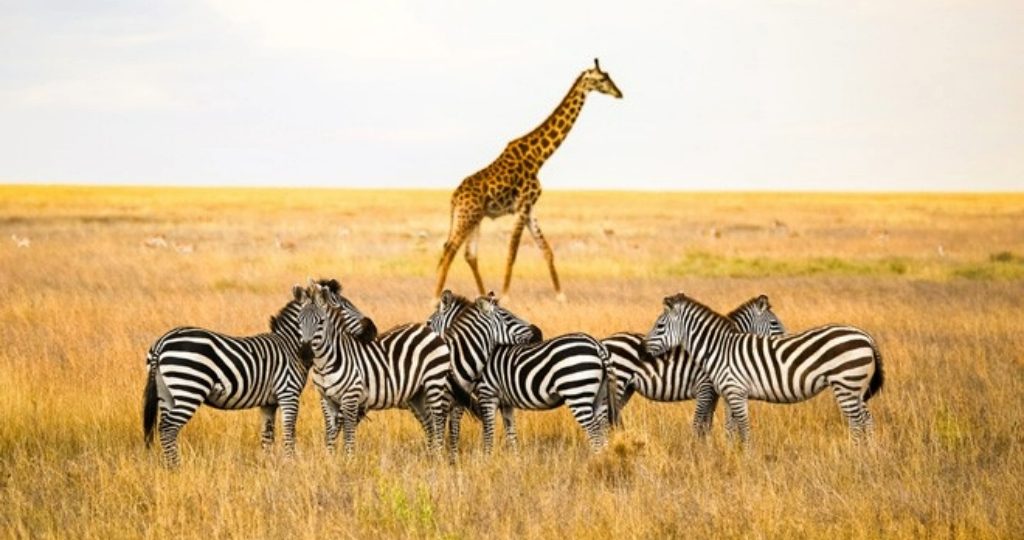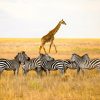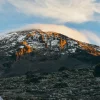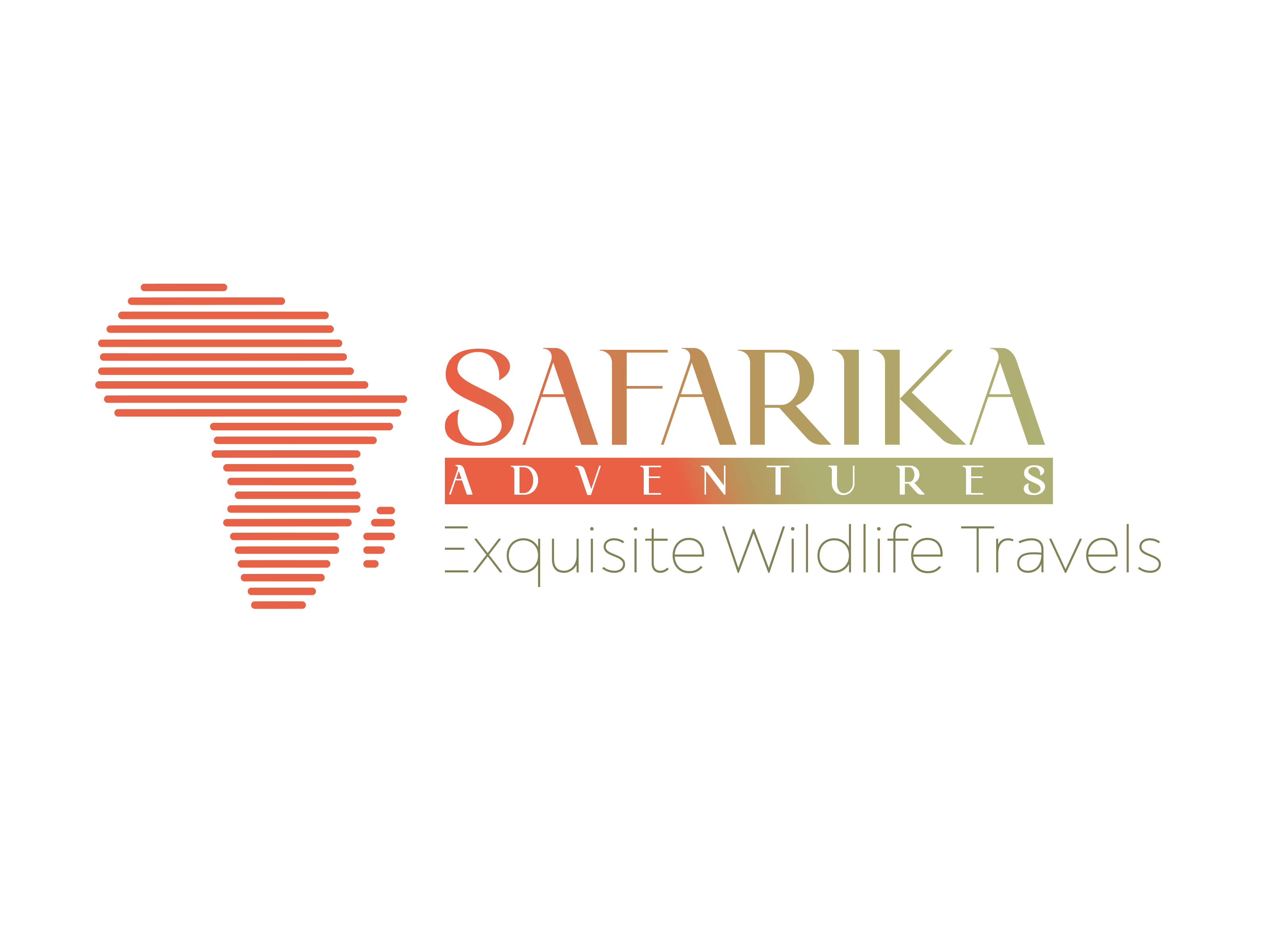Great Migration Tanzania Guide: The Month-by-Month Plan You Can Actually Use (2025)
A practical, human, no-fluff look at where to be, when to go, and how to see it without guesswork
Introduction
If you want the truth about the Great Migration, here it is. It is not a one-week event. It is a year-long cycle that moves with rain and grass. The spectacle lives mostly in Tanzania for much of the year and briefly crosses into Kenya at the peak of the dry season. If you have been searching for a great migration tanzania guide and keep finding vague answers, this one goes straight to the point. This great migration tanzania guide shows you where to be each month with real zones and timing. Your dates decide your base. Your patience at the right riverbank decides your luck. A calm, good guide does more for your experience than any filter on the internet.
Let’s set expectations before we get tactical. Estimates vary for how many animals are on the move. For years most guides said about one and a half million wildebeest with two hundred thousand zebra and a large cast of gazelles. Recent research using satellite imagery suggests the wildebeest count might be lower in recent seasons. Numbers change with droughts and births. The key takeaway for a traveler is simple. You will not be counting skulls. You will be reading the landscape and moving with it. That is what a good plan does.
What follows is a month-by-month plan for real travelers. No myths. No promises we cannot keep. Just clear zones, practical bases, and how your day should flow if you want a real shot at river action or calving drama. Keep this open while you choose dates and you will avoid ninety percent of first-timer mistakes.
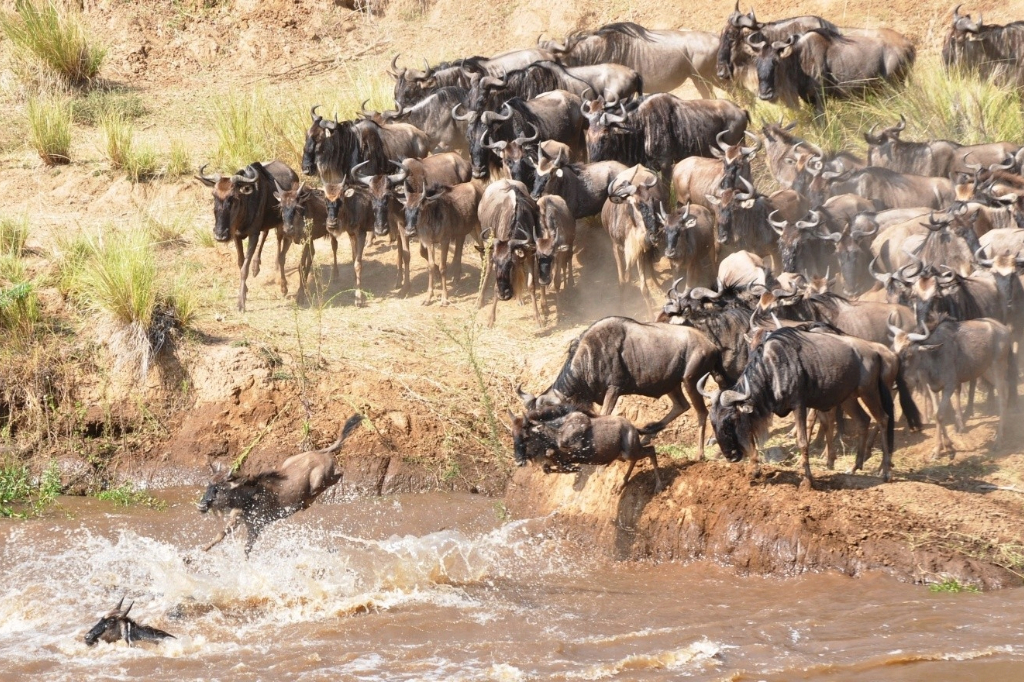
Great Migration Tanzania Guide: What It Actually Is
The Great Migration is the seasonal movement of huge herds across the Serengeti-Mara ecosystem. The driving force is rain and grass quality. Short, mineral-rich grass in the south draws the herds to the Ndutu and southern Serengeti plains around January and February. As the short grass is grazed down and the long rains begin, the herds lift north and west across central Serengeti, then push into the Western Corridor where the Grumeti River waits. When the western grass dries, the pressure builds toward the Mara River in the far north. Some years the herds linger on the Lamai wedge and Kogatende for weeks. Some years they pour into Kenya in big pulses and loop back into Tanzania by October. Then, with the short rains of November, the herds turn south again and the cycle resets.
Do not search for a start or end. There is no ceremonial beginning. Calving on the southern plains feels like a start because life explodes in a tight window. Hundreds of thousands of calves hit the ground in a few weeks. Predators respond. The air is full of calls. But even that is only one chapter in a rolling story that never stops.
Great Migration Tanzania Guide: Where the Herds Usually Are by Month
Use this as a compass, not a contract. Rains can shift by weeks. Wind and pressure can hold herds in a spot that looked empty yesterday. That is nature at work. Plan for zones, not pins on a map. Then give yourself two or three nights in each zone so luck has time to find you.
Migration at a glance
| Month | Likely Zone in Tanzania | What You Can Expect |
| January – February | Ndutu and Southern Serengeti | Peak calving. Short grass. Big cats active. Roads firm. Prime for photography and family trips. |
| March | Southern to Central Serengeti | Herds begin to spread. Weather turns. Showers common. Good predator action around the moving edges. |
| April – May | Central to Western Corridor | Long rains. Lush scenes. Fewer vehicles. Patience pays off near open plains and river lines. |
| June | Western Corridor and Grumeti River | First river crossings at Grumeti in some years. Crocodiles wait. Timing is variable and short windows are normal. |
| July – August | Northern Serengeti, Lamai and Kogatende | Mara River crossings in many seasons. Crowds build. You need time and a calm strategy at the banks. |
| September | Northern Serengeti and Mara boundary | Late crossings. Herds split between Tanzania and Kenya. Light softens. Good for longer behavior sequences. |
| October | Eastern and Central Serengeti | Southbound drift. Fewer vehicles. Long drives with surprise massing on fresh grass after scattered storms. |
| November – December | Central to Southern Serengeti | Short rains pull herds south. Landscapes go green. Predators follow. Calving is coming next. |
How Weather Shapes Movement
The herds chase fresh growth. Short grass carries more minerals and lactating mothers need that punch. The southern plains around Ndutu and the edges of the Ngorongoro highlands make a perfect nursery because predators are visible on the open ground and calves can run quickly once they stand. As the rains soak central and western zones, the grass elsewhere becomes sweeter and the herds roll away from the depleted south. Watercourses become the great filters. The Grumeti holds back columns. The Mara River in the far north becomes the hard exam. None of this is random. Every day is an energy equation for an animal that must walk, eat, drink, and avoid teeth.
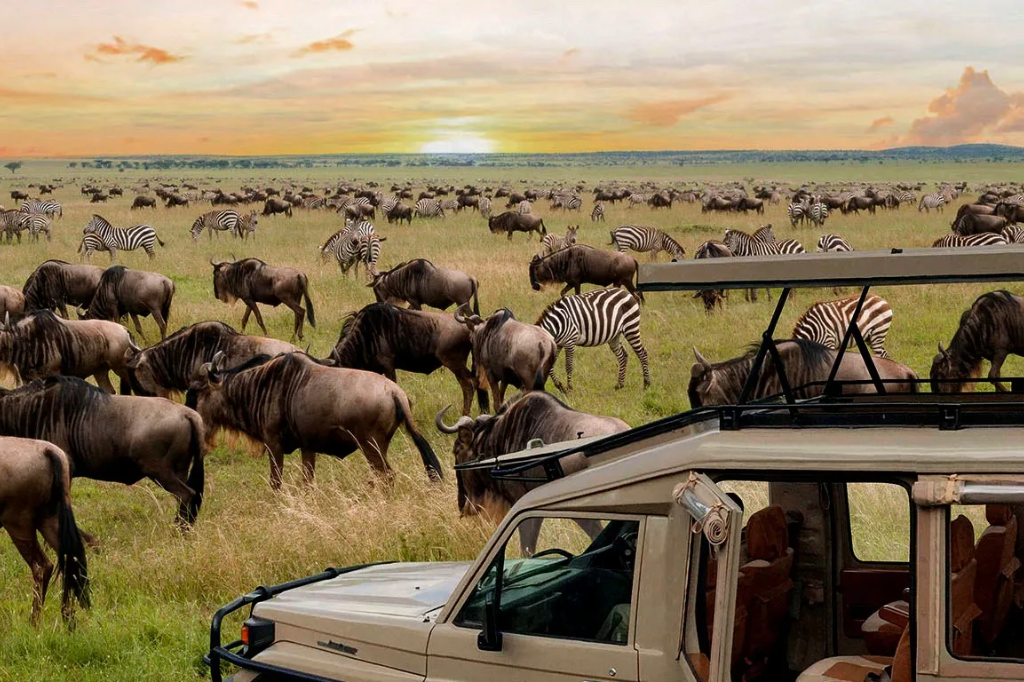
Month-by-Month: What It Feels Like On The Ground
January and February. This is calving on short grass in the south. You wake at first light and the air is cool. The plains look quiet until you crest a small ridge and see a sweep of animals dotted across the horizon. Calves stand on shaky legs and attempt their first sprints. Hyenas test the edges. Cheetahs use the smallest mounds as viewpoints. Lions move early, then rest when the sun climbs. Photographers love this time because dust is low and backdrops are simple. For families it is easier driving than later months. Your guide loops through Ndutu woodlands for shade lovers, then back to the open for the drama.
March. The pace changes. Herds begin to lift north and fan out. You can spend a day in central Serengeti and feel like the grass is breathing. One valley looks empty. The next is busy. Afternoon storms are common. Roads get slick and then dry in hours. Predators start to work the new lanes between thickets.
April and May. Long rains arrive. Some travelers avoid this window. Big mistake if you like space. The central and western plains turn a deep green and the sky throws huge light in the late afternoons. Cats are still around. Elephants cross in family lines. You see behavior that people miss in peak season because no one is rushing you off a sighting. Your guide watches wind, tracks, and bird alarm calls. When a small crossing forms on a seasonal channel, you may be alone with your vehicle. Pack a soft shell and embrace the drama of weather.
June. The Western Corridor tightens the route. Grumeti River crossings in some years feel like a private show. The windows can be short and the herds can hesitate for hours. Crocodiles hold position in the deeper pools. You need a patient guide and a plan to rotate viewpoints legally without playing leapfrog with every other vehicle. This is a strong month for travelers who want river action without the crush of the far north.
July and August. The north calls. Lamai and Kogatende turn into the stage everyone knows. This is where people hope for the iconic leap into the Mara River. Expect busy banks. Expect long waits that can turn into nothing and then everything within minutes. The correct mindset is simple. Pick a good vantage point. Stay put. Let your guide read the herds. When the bodies stack on the lip and the first brave animals commit, you will hear the volume rise and then it happens fast. Take a breath before you shoot photos. The moment rewards calm hands more than fast talk.
September. Crossing action can still happen. The light is kinder than in August and the banks are carved by weeks of hooves. Some herds stay north in Tanzania. Some feed across the boundary. If you want behavior sequences, you often score in September because vehicles thin and guides have more room to work angles without a convoy.
October. Herds start to bend south on the eastern flanks. This is the sleeper month. You can follow lines of animals from ridge to ridge for hours and never feel crowded. Grass goes a warm color and storms paint small patches of green in the distance. You drive, you read, you turn, and sometimes you find a column massed on a new flush of grass.
November and December. Short rains return and pull the loop home. The first storm of the month can flip a plan. That is fine. Central and southern plains freshen. Predators know what comes next. You feel the engine of the ecosystem spin up again. You are part of the cycle now, even if you are flying home tomorrow.
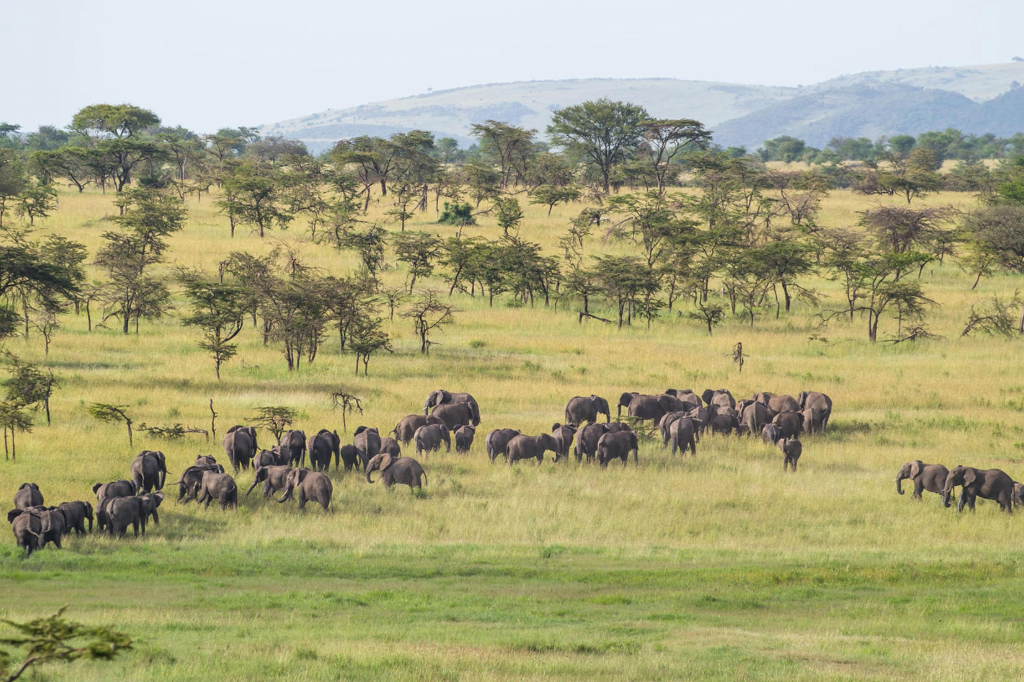
Where To Base Yourself By Season
Think in hubs. For calving, base in Ndutu or the southern Serengeti for at least two nights. For the long-rains drama, pick a central Serengeti camp with good access to open plains and then add a night toward the Western Corridor. For early river action in June, aim for camps near the Grumeti River or the adjacent woodlands that let you reach lookouts quickly. For July through September, be honest about what you want. If river crossings are your dream, you need a base in the far north and you need time. Two nights are the minimum. Three is smarter. If you arrive at noon and leave the next morning, you are rolling dice with the weather and the animals.
Logistics matter. Distances in Serengeti are real. A bush flight can save half a day on the road and help you hold your budget by reducing long transit days that burn fuel and mood. That said, some of the best sightings happen on transfer days. Work with a plan that uses one flight for the longest leg and drives the rest. It keeps the trip balanced.
How To Structure Your Days
Start early. That is rule one. River banks are cooler at dawn and animals are more willing to move. If you are not chasing crossings, you can settle into a slow, wide loop that avoids convoy behavior. Work open ground at first light for predators, then check water and shade lines as the sun climbs. Lunch can be a picnic on a legal pull-off with a good view. Afternoons are for patient sits. Your guide will know the current hotspots. Do not try to hit ten pins in one day. Try to do three things well.
If you are after a crossing, pick a bank and commit time. Talk with your guide about where the flow has been strongest in the last forty-eight hours. Tune out radio chatter that sends cars sprinting track to track. That is how people miss the actual leap while chasing rumors. Bring a hat, a light fleece, water, and a flexible mindset. A quiet day on the bank with elephants in the river at sunset beats a frantic day playing follow the leader.
Photographers: Straight Advice
A long zoom helps. Think 100 to 400 mm or a 150 to 600 mm if you can handle the weight. A second body with a short lens saves time when a lion walks close. A beanbag is more stable than a tripod in a vehicle. Shutter speed should be high during crossings. You want to freeze spray and hooves. Early and late light rewards patience. Ask your guide to position you with the sun behind your shoulder when possible. Avoid standing up and blocking views in crowded scenes. Courtesy protects your angles later in the day. Back up your cards each night and carry a spare battery. If the plan is heavy on late sits, consider a small rain cover for your camera bag.
Families and First-Timers
The migration is not only for hardcore photographers. Families do well when days have a clear rhythm and vehicles stop often to stretch. Consider two shorter drives instead of one long one. Pick properties that sit close to action so drive times are shorter and naps are an option. Bring simple layers, a soft scarf for dust, and a small pair of binoculars for each child. Guides love helping kids find their first cheetah. Share your priorities at the start of each day. If elephants and giraffes matter more than crossings, say it. A good guide will reset the plan and deliver.
Crowds, Patience, and a Simple Code of Conduct
The north gets busy in peak months. That is not a failure of the destination. It is proof that the place is special. You can still find quiet by starting early, avoiding rumor-chasing, and looking for behavior away from the main crossings. Never pressure animals with a vehicle. Keep distance. Stay on legal roads. Follow ranger instructions without argument. When everyone plays fair, sightings last longer and look better. It is also safer for you and for the wildlife that makes this whole thing worth the trip.
Budget Notes Without the Hand-Wringing
Prices rise with demand around the big events. Nights near the Mara River in July and August are premium. Calving in late January and February is also sought after. If you need value, look at late May and June around the Western Corridor or September after the main crush. Mix a simple classic camp with a mid-range lodge and spend more days in the right zones rather than bouncing between too many parks. Fly the longest leg only. Keep your must-do list short and you will see more, not less.
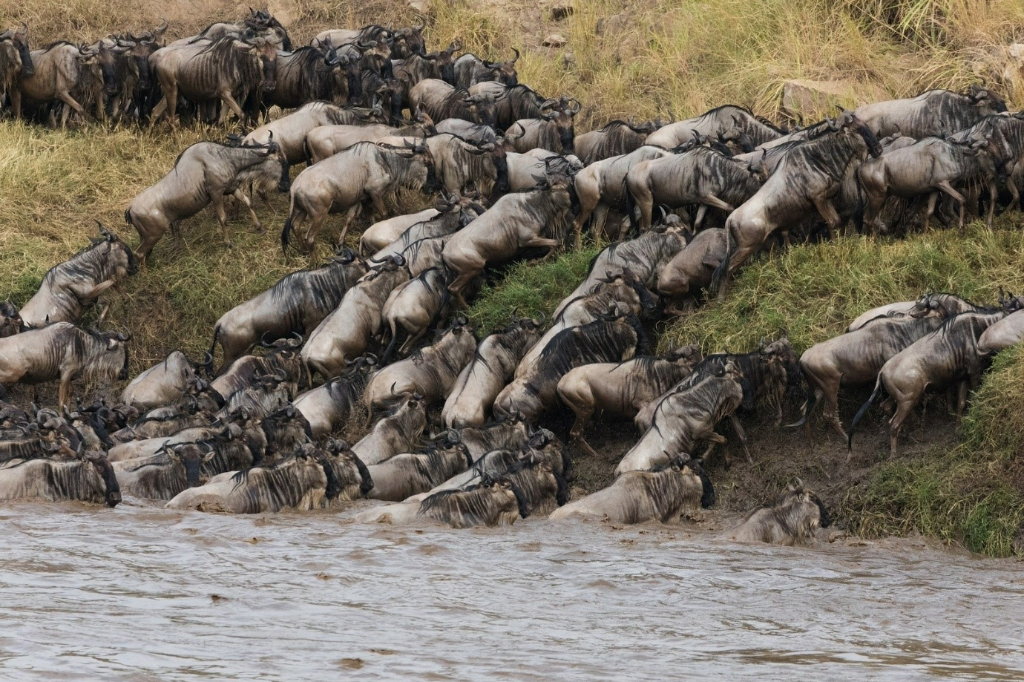
Common Myths That Trip People Up
Myth one. The Migration happens in July only. Wrong. It is a cycle that runs all year. July is only a slice.
Myth two. River crossings are guaranteed. They are not. You can wait a day and see nothing then watch a ten-minute burst the next morning. That is the game and that is why time on the bank matters.
Myth three. You can do it all in two days. You can try. You will end up driving more than watching. Most travelers are happier with at least three nights in the key zone for their dates.
Myth four. Calving is all sweetness. It is also the rawest predator action of the year. If you want behavior and you can travel in February, this is your window.
Myth five. The Migration is only in Kenya. Tanzania holds the stage most of the year. The river crossings are dramatic but the story is larger than one river.
Gear That Actually Helps
Keep it light. Soft duffel. Neutral clothes. A fleece for early mornings. A hat, sunscreen, and a small first-aid kit. Comfortable shoes you can step out in during legal stops. A power bank helps when you shoot all day. A simple rain layer for green season sits. Earplugs if you sleep light and want to enjoy camp sounds without waking at every hyena whoop. Pack less. Move easier.
Itinerary Sketches That Work
Short and sharp. Four nights. Two in the south during calving, two in central for variety. Fly one way to keep the pace smooth.
Classic first timer. Six to seven nights. Start near the crater or central Serengeti for a fast win, then move to the season’s hub. If it is June, go west. If it is August, go north. If it is February, go south. Two hubs. No rush.
The patient plan. Eight to nine nights split three and three across two key zones with a float night in the middle. It looks slow on paper and beats every rushed itinerary in real life.
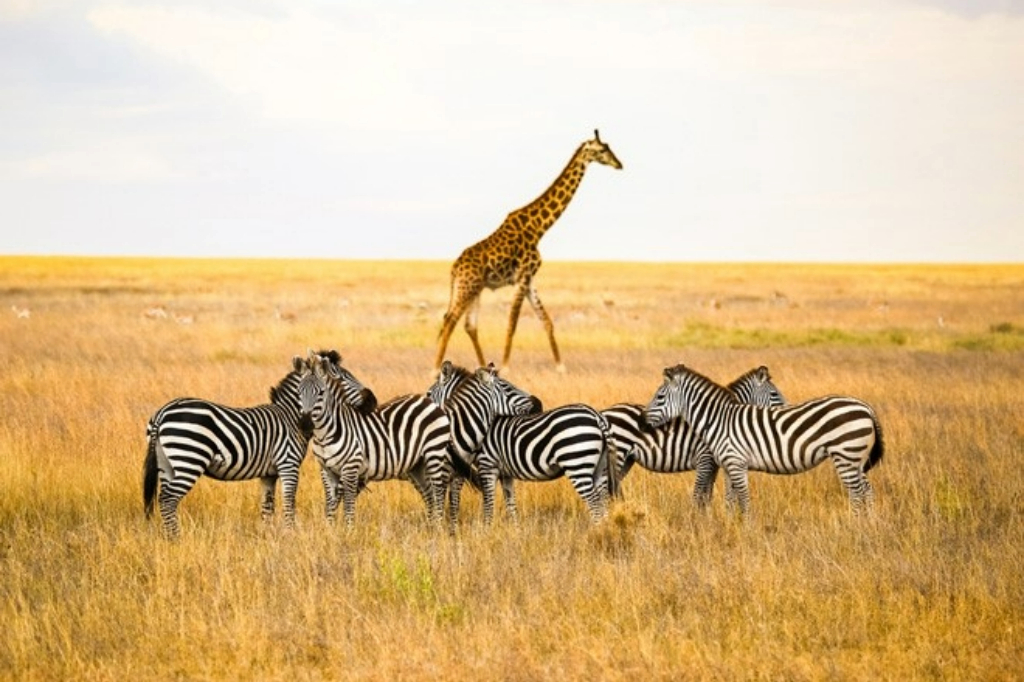
Responsible Safari Basics
Your choices matter. Book with operators who train and keep great guides. Support camps that run on solar and manage water well. Listen at briefings and follow the rules. Do not litter. Do not ask a guide to push closer for a photo that risks the animal or your vehicle. The most impressive people in the bush are the ones who watch quietly and leave a light footprint.
Quick FAQ
Can I see the Migration in April?
Yes. It is green and quiet and the herds are moving. You need patience and rain-ready gear. You will be rewarded with space and dramatic skies.
Is a river crossing possible in June?
Sometimes. The Grumeti River can deliver short, fierce crossings. Timing is hard to predict. You need a calm plan and time near the known points.
Is the northern Serengeti only for experts?
No. It is for anyone who can spend two or three nights and accept that nature runs the show. If you want the best chance at crossings, this is where you go in July, August, and often September.
Is February only about babies?
Calves are the headline, yes, and predators know it. You will also see huge elephant families, strong cheetah sightings, and wide open scenes that are hard to beat.
Do I need to add Kenya to see the Migration?
You can, and many people do, but you do not have to. Tanzania holds most of the cycle. Plan by month and put your nights in the right zones and you will have an outstanding trip.
Conclusion
The Great Migration is not a box to tick. It is a living system that rewards travelers who slow down, pick the right base, and trust the process. Bring patience. Bring curiosity. Bring a guide who loves the work. Do that and you will leave with something better than a single photo. You will carry the rhythm of the place with you.

